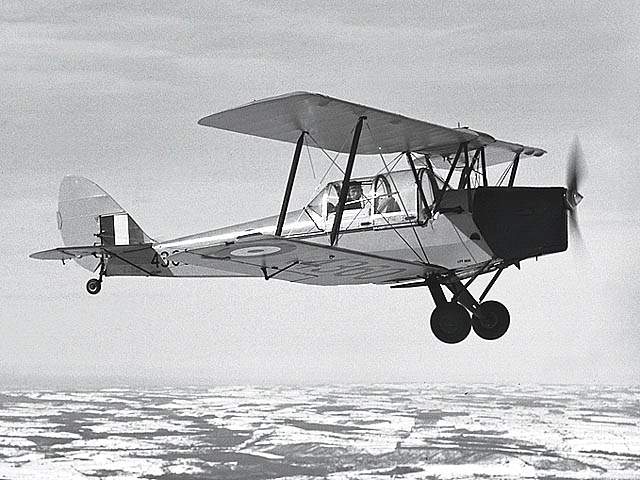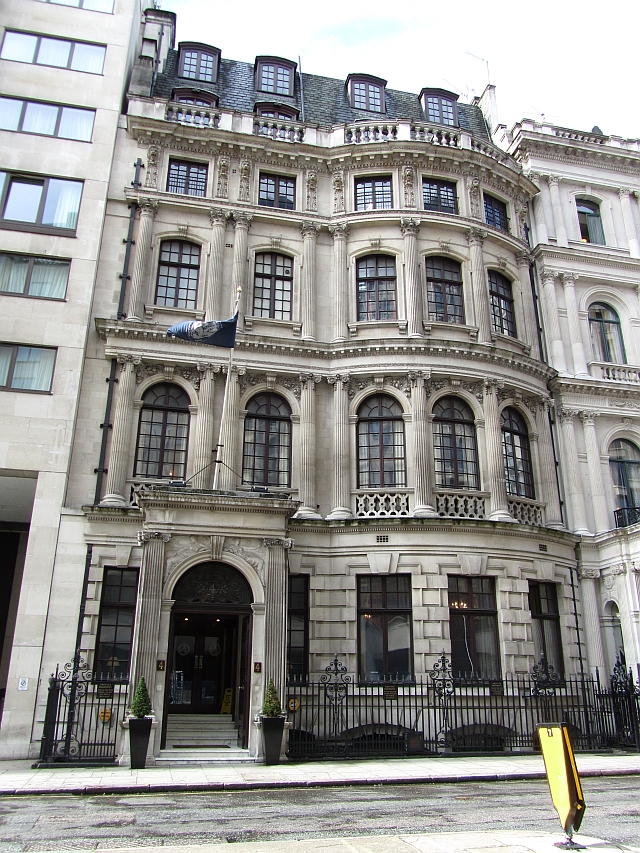|
Anne Burns
Anne Burns (23 November 1915 – 22 January 2001) was a British aeronautical engineer and glider pilot. She had a career of nearly 40 years in the Royal Aircraft Establishment as an engineer and an expert in wind shear. As a glider pilot, she obtained the British woman's record for highest altitude, and was the first woman to cross the English Channel in a glider. Early life Anne Pellew was born in Haworth, Yorkshire. She attended The Abbey School, Reading, and then went to St Hugh's College, Oxford, where, only the second woman to read Engineering Sciences at Oxford University, she was awarded the Edgell Shepee Scholarship (the first woman to receive it) and graduated with a First in 1936. She also won a hockey Blue and squash 'Half Blue'. RAE Farnborough She did research work under Professor Richard Southwell at the university's engineering laboratory. Together they wrote one of the early theoretical papers on Rayleigh-Benard convection. At the outbreak of the Sec ... [...More Info...] [...Related Items...] OR: [Wikipedia] [Google] [Baidu] |
Haworth
Haworth ( , , ) is a village in West Yorkshire, England, in the Pennines south-west of Keighley, 8 miles (13 km) north of Halifax, west of Bradford and east of Colne in Lancashire. The surrounding areas include Oakworth and Oxenhope. Nearby villages include Cross Roads, Stanbury and Lumbfoot. Haworth is a tourist destination known for its association with the Brontë sisters and the preserved heritage Keighley and Worth Valley Railway. History Haworth is first mentioned as a settlement in 1209. The name may refer to a "hedged enclosure" or "hawthorn enclosure". The name was recorded as "Howorth" on a 1771 map. In 1850, local parish priest Patrick Brontë invited Benjamin Herschel Babbage to investigate the village's high early mortality rate, which had led to all but one of his six children, including the writers Emily and Anne Brontë, dying by the age of 31. Babbage's inspection uncovered deeply unsanitary conditions, including there being no sewers, excr ... [...More Info...] [...Related Items...] OR: [Wikipedia] [Google] [Baidu] |
De Havilland Tiger Moth
The de Havilland DH.82 Tiger Moth is a 1930s British biplane designed by Geoffrey de Havilland and built by the de Havilland, de Havilland Aircraft Company. It was operated by the Royal Air Force (RAF) and other operators as a primary trainer (aircraft), trainer aircraft. In addition to the type's principal use for ''ab initio'' training, the World War II, Second World War had RAF Tiger Moths operating in other capacities, including Maritime patrol aircraft, maritime surveillance and defensive anti-invasion preparations; some aircraft were even outfitted to function as armed light bombers. The Tiger Moth remained in service with the RAF until it was replaced by the de Havilland Canada DHC-1 Chipmunk, de Havilland Chipmunk during the early 1950s. Many of the military surplus aircraft subsequently entered into civilian operation. Many nations have used the Tiger Moth in both military and civilian applications, and it remains in widespread use as a recreational aircraft. It is s ... [...More Info...] [...Related Items...] OR: [Wikipedia] [Google] [Baidu] |
RAF Ternhill
Royal Air Force Tern Hill, or more simply RAF Tern Hill, was a Royal Air Force station at Ternhill in Shropshire, England, near the towns of Newport, Shropshire, Newport and Market Drayton. The station closed in 1976, with the technical and administrative site transferring to the British Army to become Borneo Barracks, later renamed Clive Barracks (after Major general, Major-General Robert Clive). The airfield part of the site was retained by the RAF and is now known as Tern Hill Airfield. It is predominantly used as a relief landing ground for helicopters of the No 1 Flying Training School, based at RAF Shawbury. The airfield is also home to the RAF's No. 632 Volunteer Gliding Squadron. History First World War The airfield was first opened in 1916 and was initially operated by the Royal Flying Corps before being taken over by its successor the Royal Air Force (RAF) on 1 April 1918. The first squadron posted to RFC Tern Hill was No. 95 Squadron RAF, 95 Squadron RFC from 8 O ... [...More Info...] [...Related Items...] OR: [Wikipedia] [Google] [Baidu] |
Eon Olympia
The Eon Olympia was a glider produced from 1947 by Elliotts of Newbury. Design and development Elliotts had been asked in 1945 by Chilton Aircraft Ltd to make one set of wings for the Chilton Olympia, a glider that had been developed in pre-war Germany as the DFS Olympia Meise. This had been designed by Hans Jacobs and selected as the glider for the 1940 Summer Olympics. The German drawings were not detailed and so new drawings were made by Chilton which retained the Meise Olympia's aerodynamic shape. The wing redesign resulted in a stronger and heavier (+30 kg) aircraft. To maintain employment at their factory, Elliotts refused to sell the wing jigs that they had made for the prototype. Consequently, Chilton gave up all aircraft work, agreeing to sell to Elliotts the production rights, fuselage jigs, and work in hand on all Olympia gliders. Production of the Olympia (originally called Type 5) started in 1946 as a batch of 100, and the first flight was made in January 1 ... [...More Info...] [...Related Items...] OR: [Wikipedia] [Google] [Baidu] |
Military Glider
Military gliders (an offshoot of common gliders) have been used by the militaries of various countries for carrying troops ( glider infantry) and heavy equipment to a combat zone, mainly during the Second World War. These engineless aircraft were towed into the air and most of the way to their target by military transport planes, e.g., C-47 Skytrain or Dakota, or bombers relegated to secondary activities, e.g., Short Stirling. Most military gliders do not soar, although there were attempts to build military sailplanes as well, such as the DFS 228. Once released from the tow craft near the front, they were to land on any convenient open terrain close to the target, hopefully with as little damage to the cargo and crew as possible, as most landing zones (LZ) were far from ideal. The one-way nature of the missions meant that they were treated as semi-expendable leading to construction from common and inexpensive materials such as wood. Most nations seriously attempted to recover ... [...More Info...] [...Related Items...] OR: [Wikipedia] [Google] [Baidu] |
Whitney Straight
Air Commodore Whitney Willard Straight, (6 November 1912 – 5 April 1979) was a British racing driver, aviator, businessman, and a member of the prominent Whitney family. Early life Born in New York City, Whitney Straight was the son of Major Willard Dickerman Straight (1880–1918) and one of the richest heiress Dorothy Payne Whitney (1887–1968), daughter of William Collins Whitney and she inherited $15,000,000 from her father. He was six years old when his father died in France of influenza during the great epidemic while serving with the United States Army during the First World War. Following his mother's remarriage to British agronomist Leonard K. Elmhirst (1893–1974) in 1925, the family moved to England. They lived at Dartington Hall where he attended the progressive school founded by his parents. His education was completed at Trinity College, Cambridge. He became close friends with Dick Seaman who attended the same college. Among his relations were his firs ... [...More Info...] [...Related Items...] OR: [Wikipedia] [Google] [Baidu] |
English Electric Canberra
The English Electric Canberra is a British first-generation, jet-powered medium bomber. It was developed by English Electric during the mid- to late 1940s in response to a 1944 Air Ministry requirement for a successor to the wartime de Havilland Mosquito fast bomber. Among the performance requirements for the type was an outstanding high-altitude bombing capability and high speed. These were partly accomplished by making use of newly developed jet-propulsion technology. When the Canberra was introduced to service with the Royal Air Force (RAF), the type's first operator, in May 1951, it became the service's first jet-powered bomber. In February 1951, a Canberra set another world record when it became the first jet aircraft to make a nonstop transatlantic flight. Throughout most of the 1950s, the Canberra could fly at a higher altitude than any other aircraft in the world, and in 1957, a Canberra established a Flight altitude record, world altitude record of . Due to its ability ... [...More Info...] [...Related Items...] OR: [Wikipedia] [Google] [Baidu] |
Fournier RF 4
The Fournier RF 4 is a single-seater motor glider designed by René Fournier in 1966. It is an aerobatic version of the Fournier RF 3.pilotfriend.com: Fournier aircraft history, performance and specifications - accessed 13 March 2008Sailplane Directory: Fournier RF 5 - accessed 13 March 2008 Design and development Conceived as a motor glider and sport touring aircraft, the RF 4 was introduced in 1966. It is of all-wood construction and is fully |
Clear-air Turbulence
In meteorology, clear-air turbulence (CAT) is the turbulence, turbulent movement of air masses in the absence of any visual clues such as clouds, and is caused when bodies of air moving at widely different speeds meet. The atmospheric region most susceptible to CAT is the high troposphere at altitudes of around as it meets the tropopause. Here CAT is most frequently encountered in the regions of jet streams. At lower altitudes it may also occur near mountain ranges. Thin cirrus clouds can also indicate high probability of CAT. CAT can be hazardous to the comfort, and occasionally the safety, of aviation, air travelers, as the aircraft pilots often cannot see and anticipate such turbulences, and a sudden encounter can impart significant stress (mechanics), stress to the airframe. CAT in the jet stream is expected to become stronger and more frequent because of climate change, with transatlantic wintertime CAT increasing by 60% (light), 95% (moderate), and 150% (severe) by the ti ... [...More Info...] [...Related Items...] OR: [Wikipedia] [Google] [Baidu] |
Royal Aeronautical Society
The Royal Aeronautical Society, also known as the RAeS, is a British multi-disciplinary professional institution dedicated to the global aerospace community. Founded in 1866, it is the oldest Aeronautics, aeronautical society in the world. Members, Fellows, and Companions of the society can use the post-nominal letters MRAeS, FRAeS, or CRAeS, respectively. Function The objectives of The Royal Aeronautical Society include: to support and maintain high professional standards in aerospace disciplines; to provide a unique source of specialist information and a local forum for the exchange of ideas; and to exert influence in the interests of aerospace in the public and industrial arenas, including universities. The Royal Aeronautical Society is a worldwide society with an international network of 67 branches. Many practitioners of aerospace disciplines use the Society's designatory Post-nominal letters, post-nominals such aFRAeS CRAeS, MRAeS, AMRAeS, and ARAeS (incorporating the fo ... [...More Info...] [...Related Items...] OR: [Wikipedia] [Google] [Baidu] |
Queen's Commendation For Valuable Service In The Air
The Queen's Commendation for Valuable Service in the Air, formerly the King's Commendation for Valuable Service in the Air, was a merit award for flying service awarded by the United Kingdom between 1942 and 1994. It was replaced by the Queen’s Commendation for Bravery in the Air and the Queen's Commendation for Valuable Service. Criteria The King's Commendation for Valuable Service in the Air was first awarded in 1942 to reward both meritorious and gallant service while flying, not in the face of an enemy, that did not reach the standard required for the Air Force Cross or the Air Force Medal.. It could be awarded to both members of the British and Commonwealth Armed Forces and to civilians. It was renamed the Queen's Commendation for Valuable Service in the Air in 1952, following the accession of Queen Elizabeth II to the throne. Appearance Service personnel wear a bronze oak leaf device on the ribbon of the appropriate campaign medal, in the same way as those mentioned ... [...More Info...] [...Related Items...] OR: [Wikipedia] [Google] [Baidu] |








